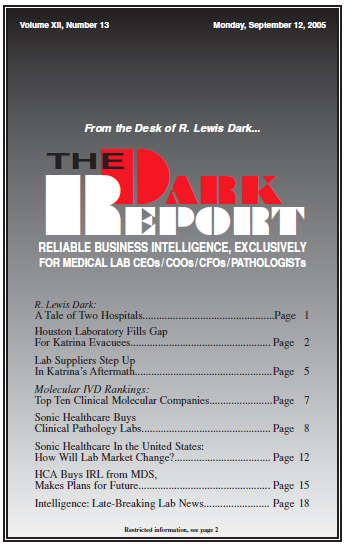CEO SUMMARY: It’s one of the most interesting lab acquisitions to take place in the past decade. Pathologist-owners of Austin, Texas-based Clinical Pathology Laboratories, Inc. are selling up to 85% of their lab company to Sonic Healthcare, Ltd, Australia’s largest laboratory firm. The acquisition brings a new lab competitor into the U.S. market and is …
Sonic Healthcare Buys Clinical Pathology Labs Read More »
To access this post, you must purchase The Dark Report.


